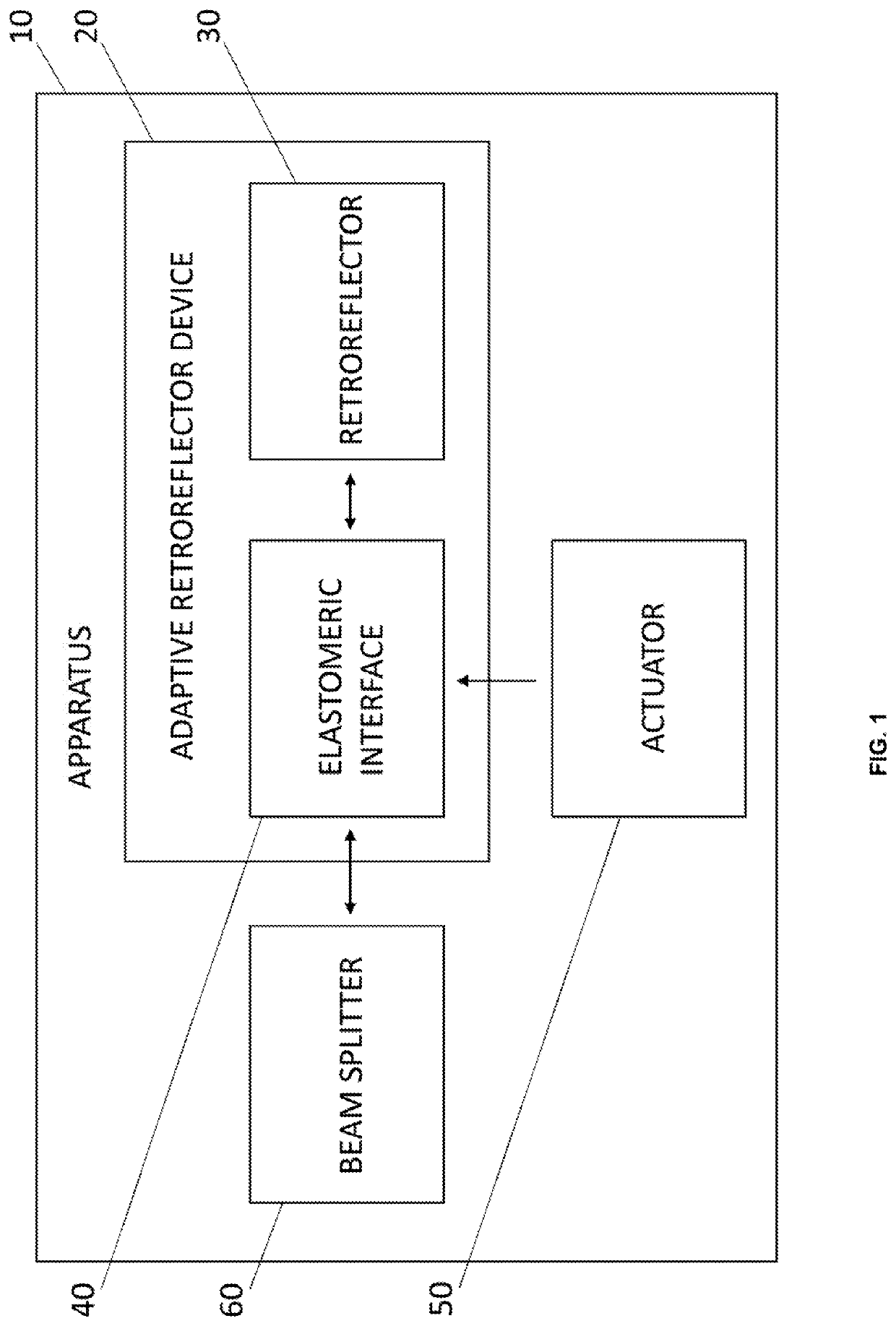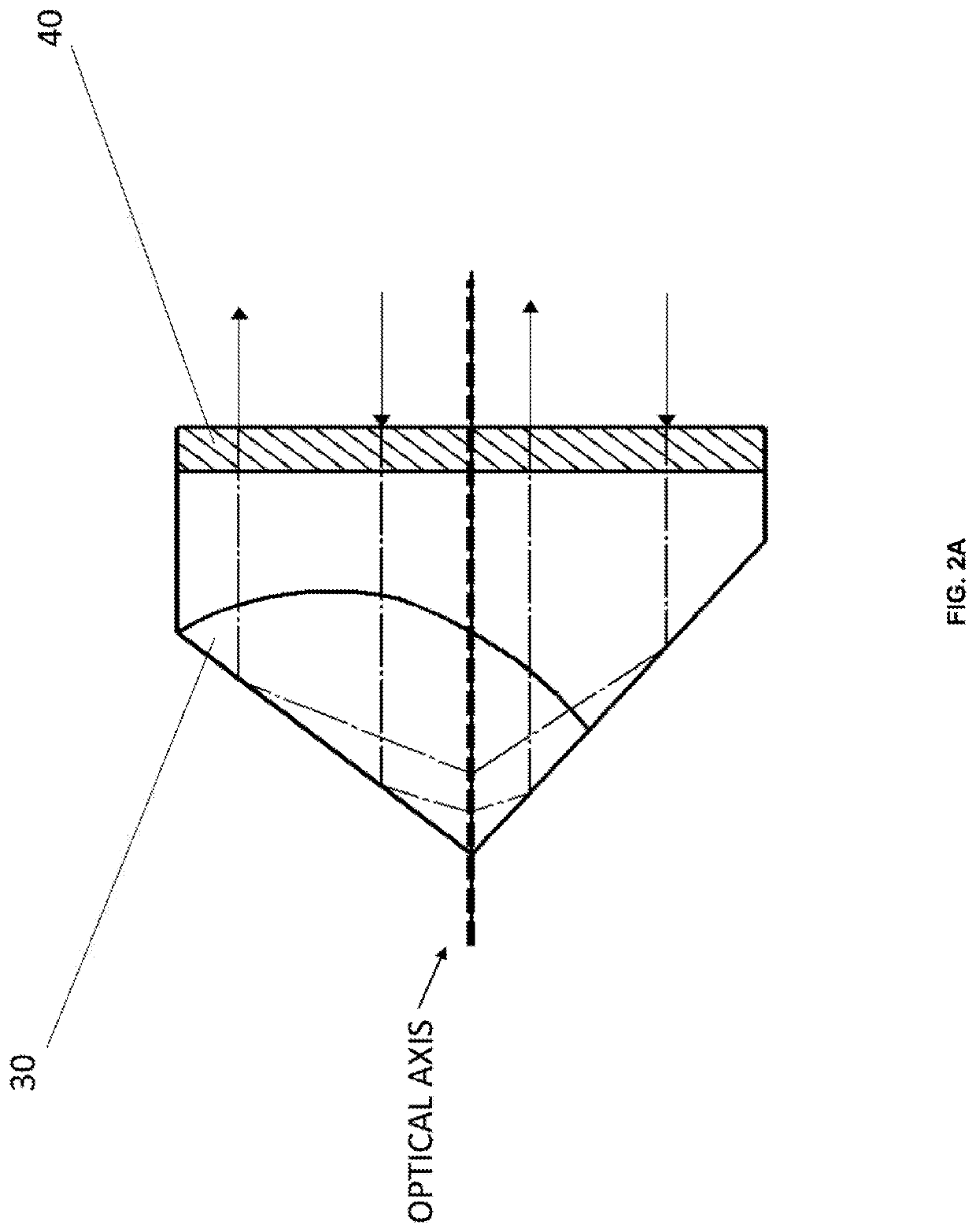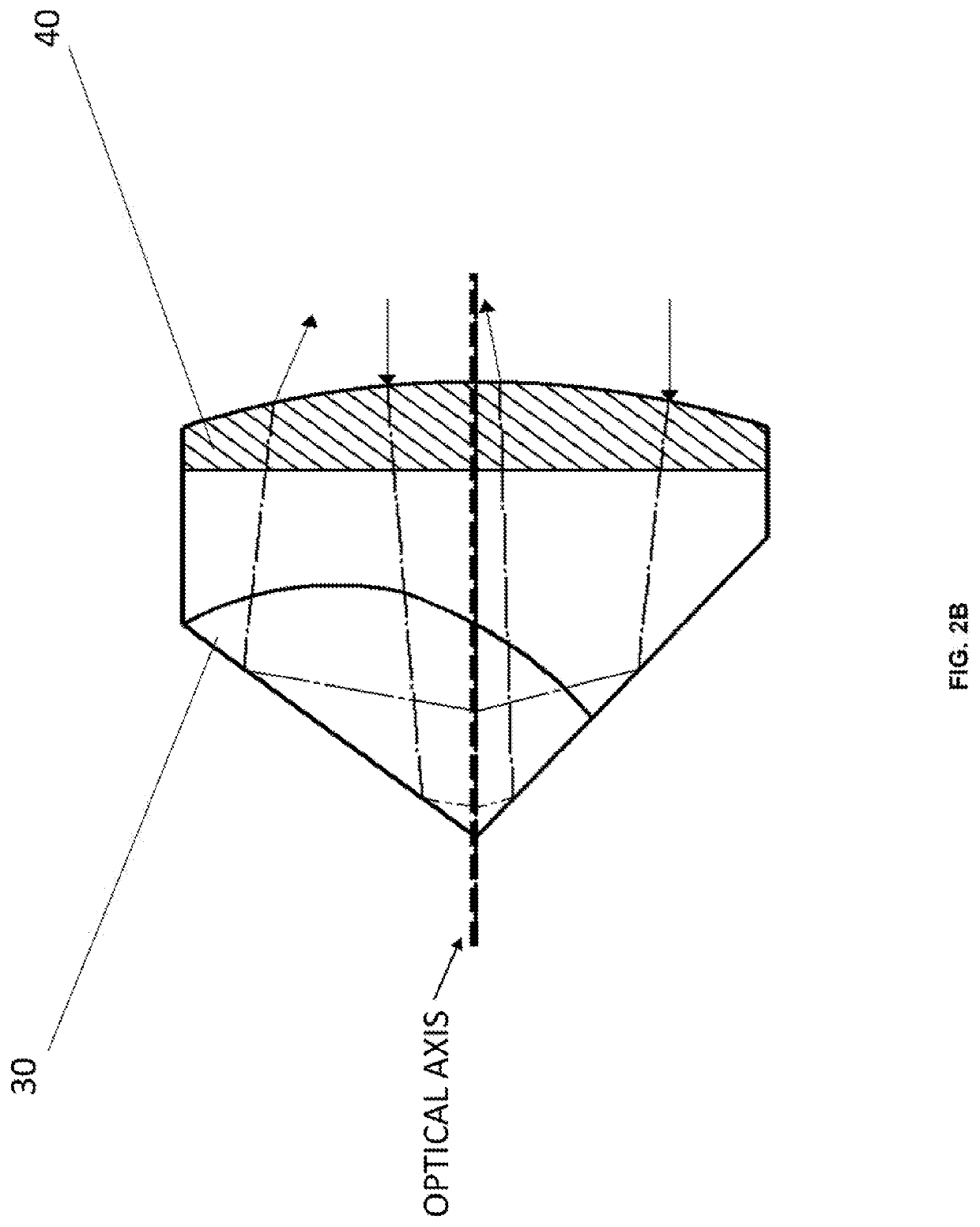Adaptive retro-reflector (AR)
- Summary
- Abstract
- Description
- Claims
- Application Information
AI Technical Summary
Benefits of technology
Problems solved by technology
Method used
Image
Examples
Embodiment Construction
[0019]An apparatus 10 according to an embodiment of the invention is described as follows with reference by way of illustration to FIG. 1. The apparatus 10 includes a refractive active element, namely, an adaptive retro-reflector device 20. The adaptive retro-reflector device 20 includes a standard retro-reflector 30. In operation, the retro-reflector 30 receives an incident optical signal (i.e., an incident beam of electromagnetic radiation) and outputs a returned optical signal (i.e., an outgoing beam of electromagnetic radiation). The returned optical signal includes, or exhibits, a change in divergence. For the purpose of this patent application, “divergence” of an optical signal is defined as how much, in terms of an angular measurement, the beam diameter changes with increasing distance. That is, divergence refers to how fast a light beam expands far from its beam waist. For longer distances, light beams exhibit divergence due to diffraction, atmospheric effects (e.g., thermal...
PUM
 Login to View More
Login to View More Abstract
Description
Claims
Application Information
 Login to View More
Login to View More - R&D
- Intellectual Property
- Life Sciences
- Materials
- Tech Scout
- Unparalleled Data Quality
- Higher Quality Content
- 60% Fewer Hallucinations
Browse by: Latest US Patents, China's latest patents, Technical Efficacy Thesaurus, Application Domain, Technology Topic, Popular Technical Reports.
© 2025 PatSnap. All rights reserved.Legal|Privacy policy|Modern Slavery Act Transparency Statement|Sitemap|About US| Contact US: help@patsnap.com



